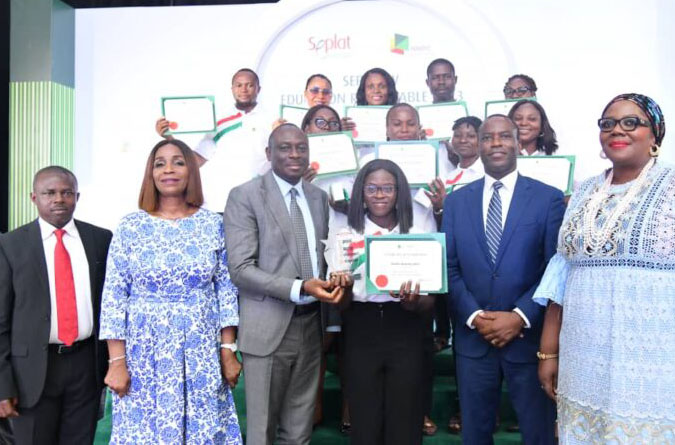
Patricia Jemibewon, Director of Organizational Transformation at gomoney delves into the organisation’s adaptation to remote work, discussing its impact on HR practices, employee well-being, user experience, and fostering a robust company culture.
How has gomoney adapted its human resource practices to support a fully remote workforce, and what challenges have you encountered in this process?
Remote work has many benefits for our people and our business, so from recruitment to employee engagement, all of gomoney’s practices are designed around it. In particular, we’ve leaned in more to address productivity and communication hurdles.
Can you share some of the key strategies and tools you’ve implemented to ensure effective collaboration and communication among remote team members, ultimately benefiting gomoney’s users?
During our transition to taking our operations fully remote, work processes at a point were disorganized – someone would call someone to have something fixed, someone else would call someone else – which led to inefficiencies. We had to reorganize the way work was happening to ensure that we were working together as a team and ultimately got results. As far as tools, Notion has been a great tool to support team communication – it houses all communication in a user-friendly way and facilitates collaboration better than other tools that I’ve used.
Remote work often comes with concerns about employee well-being. How does gomoney address and promote the well-being of its remote employees?
Building culture remotely is a challenge, so the team plans for things like physical meetups, or Monday morning check-ins with our team members. We make sure that various resources are available to anyone who needs them – from a physical workspace that’s available on demand to mental health support.
With a remote work structure, talent acquisition and retention may take on a different dynamic. What innovative approaches has gomoney employed to attract and keep top talent, and how does this impact the company’s value delivery?
We understand that the workforce has evolved with people having various ambitions and constantly seeking new opportunities. From the beginning, we’ve used technology to try to make sure every candidate has a great experience with us. As they join, we try to match each person’s ambitions to their work and careers so that work can be more fulfilling and engaging. We’re a constant work in progress, which means we’re always reassessing what we can do to ensure that gomoney employees are at their best.
What would you say is the role of leadership in ensuring employee retention?
There’s some truth in the saying “People leave managers, not companies.” Leaders have to role model the type of behaviors that allow people to be at their best. These behaviors have been redefined in today’s workplace, where empathy and empowerment play a much bigger role.
Remote work can sometimes blur the lines between personal life and work. How does gomoney foster work-life balance for its employees, and how does this positively influence the quality of service provided to users?
We aren’t like the traditional workplace where you can’t leave the office before your manager or you can’t go see your child’s school concert. We focus on performance outcomes and ultimately that translates to what matters most, what the consumer experiences.
Could you share any success stories or specific examples of how gomoney’s remote work model has directly contributed to enhancing the user experience or the company’s overall performance?
We have been able to recruit outside of Lagos so that we have team members in other cities. When we have activities in those cities, we already have some on-the-ground knowledge. We’ve also been able to retain talent that goes abroad in some cases, which would have otherwise left vacancies and impacted the services those talents deliver.
In light of gomoney’s remote work structure, what steps have you taken to maintain a strong company culture and values, and how do these aspects align with delivering value to your users?
From the beginning, when we hire, we look for talents that have the same values. For example, when we hire people managers, you can’t just be good at the work, you also have to show that you can lead a team and help each individual grow. We then reinforce our culture and values at different touchpoints – strategy sessions, Monday meetings, and team-building events. We have an open culture, where we value different perspectives, so when we see a disconnect, we have open conversations. to And this spills over to our customer experience – happy employees, happy customers.
How does gomoney consistently deliver optimal customer satisfaction despite its remote structure?
Data is power! We use performance metrics and insights to continually ensure that we are delivering the best customer experience. We can see when customers are not happy and why, then we diagnose what’s happening and fix it.
In what ways can fintechs adapt their work culture and employee engagement strategies to keep up with the rapidly changing landscape of the contemporary workplace?
Just as fintechs have rethought how traditional products and services can be delivered through tech, they also need to rethink what the workplace can be like. Start with the leaders holding themselves accountable for employee engagement – it’s not just HR’s job. Then reimagine every HR practice to have people at the heart.
How do you ensure diversity and inclusivity at gomoney?
Firstly, we believe in diversity of thought – so creating an open environment where everybody has a voice is important to us. We also recognize that demographic diversity, what most people think of when they hear the terms, contributes to the diversity of thought. To encourage more diversity, we structure practices into how we do things; how we hire, how we compensate, how we reward, for example.
How do you ensure that workers at gomoney have a healthy work-life balance?
We drive for self-accountability and alignment. We start with someone’s commitment, ensure that it aligns with what the business needs, and then hold ourselves to that commitment. In this way, personal capacities are considered. Every now and then, exceptions come up that might require some extra work outside of normal work hours, but it’s usually of critical importance.













